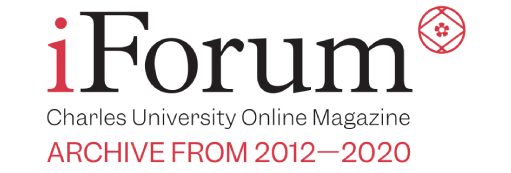Ivana Herglová • 4 September 2016
Prague Revisited: The Coronation of Charles IV
In early September 1347, the Roman King Charles of Luxembourg and his first wife, the French Princess Blanche de Valois, participated in the lengthy ceremony to become King and Queen of Bohemia. The ceremony took place in the Romanesque basilica in St. Vitus Cathedral of Prague Castle, founded by Prince Spytihněv II. This Saturday and Sunday, the historians of Charles University and the Czech Academy of Science reconstructed this festive event, including the penitent pilgrimage to Vyšehrad in the south of the city of Prague on the eve of coronation.
The highly anticipated event began on Saturday afternoon, when Charles IV, in the company of the Archbishop of Prague Ernest of Pardubice and the leading Bohemian noblemen, arrived at Vyšehrad. Here, the sovereign first visited the Rotunda of St. Martin and the St. Laurentius Basilica, where, following the pre-coronation custom of Bohemian Kings, he paid respect to his mother’s lineage and bowed to the bast shoes and satchel of Přemysl the Ploughman, the legendary ancestor of Bohemian dukes and kings of the Přemyslid dynasty.
Next on the programme was a holy mass in the Basilica of St. Peter and St. Paul and a torchlight procession of the whole royal entourage to the city centre and back to Prague Castle. As the entourage was passing around Karolinum, the ancient seat of Charles University, Charles IV was greeted by the Vice-Rector Professor Jan Royt in the name of this academic institution, which was founded by the real king in 1348.
Faithful, but shortened
The coronation ceremony itself took place on Sunday in the Cathedral of Saints Vitus, Wenceslaus and Adalbert in Prague Castle. The two-hour long ceremony was opened by Professor Royt, who emphasised the significance of the place of coronation to the audience. “The spiritual importance of this place lies in the devotion to the Czech Patron Saints. After all, the tomb of the Kings of Bohemia lies in the crossing of burial and relic sites of Saint Vitus, St. Wenceslas, the Patron Saint of Czech Republic, Saint Sigismund and St. Adalbert, the Patron Saint of Prague Archbishopric,” he reminded. He also drew attention to the manner of Charles IV’s coronation – not only was the King crowned, but he was anointed in the way of the biblical figures David and Solomon as a priest and king. In this he followed the examples of the kings of France, who were anointed by the sacred oil in Reims, which was supposedly brought from Heaven by an angel and which also served for the anointment of King David.
At 1 o’clock in the afternoon, the cathedral bells started to sound and the entourage of church officers, armigers, Royal court members and finally Charles IV and Blanche de Valois themselves entered the cathedral by the original entrance, the so called Golden Gate. The coronation itself, however, was not performed in its full version as given in the Coronation Order of Bohemian Kings; the ceremony was shortened. Miroslav Smaha from the Catholic Theological Faculty of CU, the main organiser and performer representing Charles IV for the day, explains: “Our goal was to prepare a reconstruction of a medieval coronation liturgy and to revoke the feeling of the festive ceremony which bounded the King to follow Jesus Christ, the King of Kings, in rightful rule as faithfully as possible. Logistically, however, it was not possible to run a truly authentic copy of the ceremony, as the coronation with all its parts took almost 1.5 days. Just to follow the many hours-long mass would likely be overwhelming for people today.”
During the coronation, in accordance with the original order of the ceremony, the following parts were performed: the anointment of the King, the dressing of the King, the handing over of the Royal Insignia, the Consecration of the Crown, a festive Mass, and the oath of the King in front of the throne, the face of God, the clerics and the people. The King’s coronation was followed by the coronation ceremony of the Queen, then the mass liturgy was performed as well as the King’s sacrifice of bread, a jug of wine and gold.
For authenticity, a copy of the original of St. Wenceslas Crown was borrowed. The coronation robes and other clothes of the main historical characters of the entourage as well as a copy of the gothic sceptre and the apple for the King and Queen were made for the occasion according to the preserved historical sources and documents. The performers of the smaller roles were selected out of groups specialising in re-enactments of Czech history. The main condition was to have their own suitable clothes, weapons, jewellery or other paraphernalia which would correspond with the reality of the 14th century. Several academics of Charles University also decided to join the re-enactment, such as the historian Professor Zdeněk Beneš or the art historian Dr. Milan Pech.
The final part of the festive weekend was staged in the Old Town Square, after the end of the coronation ceremony in Prague Castle. A royal banquet was held here, as well as a jousting tournament.
During the whole weekend a historical programme “Life in Medieval Prague” was held in the premises of the Karolinum. The young and adult visitors alike were able to visit medieval workshops or view musical, dance or juggler performances there.
The coronation ceremony was co-organised by Charles University and the Capital City Prague, and the event commemorated the 700th anniversary of birth of Charles IV.
|
Anna O'Sullivan is a second-year student from the University of Southampton studying Modern History and Politics at Charles University for one semester. Originally from London, she has a strong interest in learning about other cultures, history, politics, film and travel. She is excited to contribute to the International iForum and the opportunity to meet new people from different backgrounds it provides, and to become more involved in the Charles University student community. |
